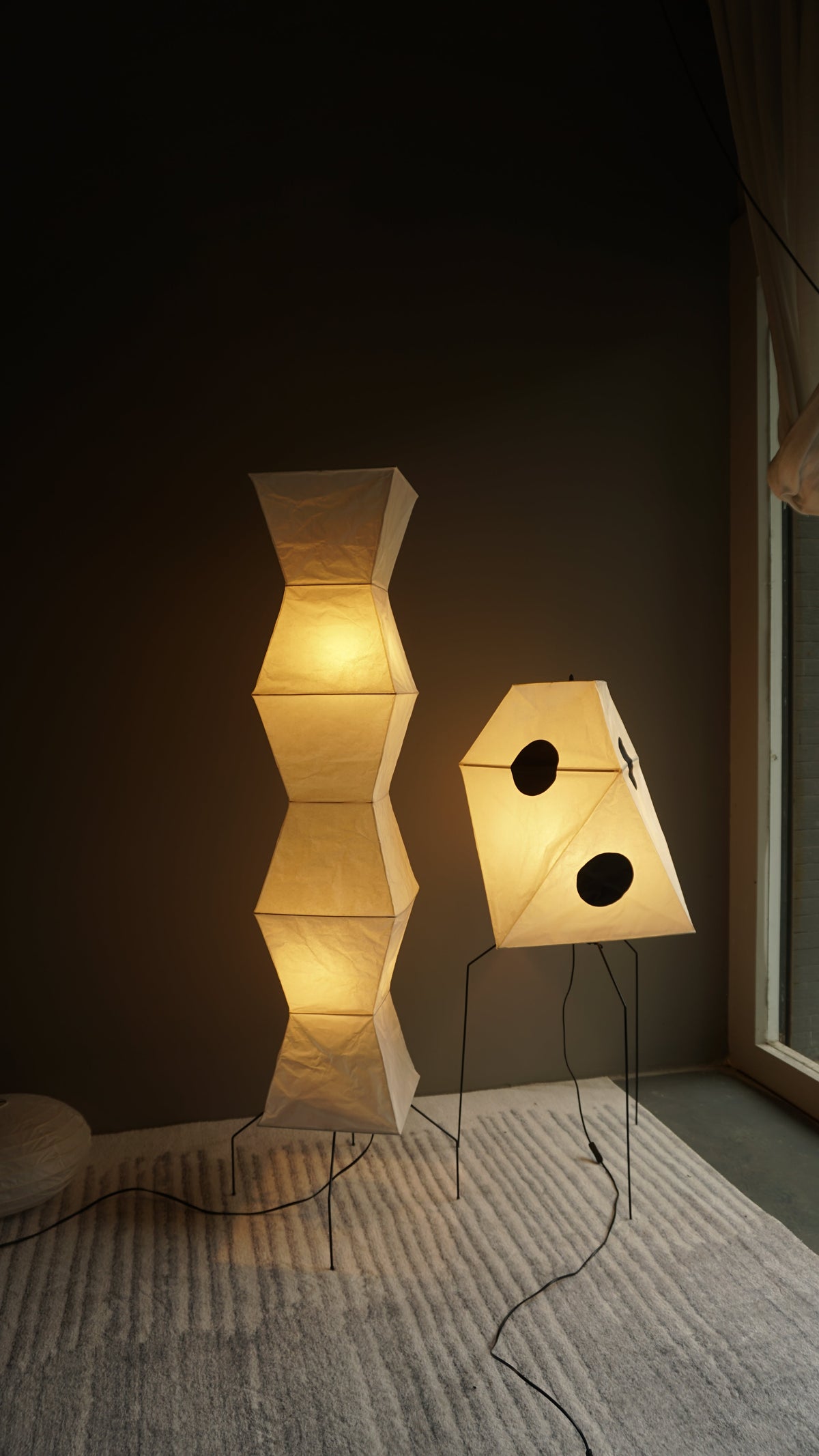Imagine entering a room bathed in the warm, captivating glow reminiscent of a sunset, all emanating from a single lamp. This is the enchanting allure of Akari paper lamps, where minimalist design converges seamlessly with timeless elegance.
The choice of materials plays a pivotal role in shaping the design and functionality of Akari paper lamps. Each type of paper, from the delicate and semi - transparent rice paper to the textured and robust washi paper, imparts a distinct character to the lampshade, creating a unique visual and tactile experience.
The Artistry Behind Akari Light Sculptures
Crafting Akari lighting sculptures is a labor of love that requires skilled artisans with an acute eye for detail and a gentle, meticulous hand. The process commences with stretching rods across a wooden mold, carefully forming a ribbed structure. Next, paper is precisely cut into strips and painstakingly attached to the ribbing. Once the glue has dried to perfection, the wooden mold is removed, revealing a beautifully crafted lamp that stands as a testament to the harmonious blend of traditional materials and contemporary design.
Materials Used in Captainsbamboo Akari Lamps
Rice Paper
Rice paper is the most commonly employed material in our Akari lamps. Its delicate, semi - transparent quality not only exudes an air of elegance but also offers a cost - effective solution. The Harmony Glow Akari Paper Lamp serves as a prime example of a lamp crafted from this exquisite paper, casting a soft, inviting light that enhances any space.
Cotton Paper
Cotton paper boasts greater structural strength compared to rice paper. It presents a pristine white color and a soft, smooth surface. While its fiber content may give it a slightly less opaque appearance, it is notably more durable and resistant to tearing. If you're seeking a high - quality yet budget - friendly lamp, the Zephyr Floor Lamp is an excellent choice, showcasing the versatility of cotton paper.
Colored Cotton Paper (Yellow Tone)
Our colored cotton papers are infused with a warm yellow tone, creating an inviting and cozy atmosphere. The semi - transparent nature of the paper, combined with the warm yellow hue, produces a mellow, wabi - sabi effect that adds a touch of tranquility to any room. The Hitomi Akari Floor Lamp is a perfect illustration of a lamp crafted with this paper, radiating a gentle, soothing glow.
Washi Paper
Washi paper, a true masterpiece of traditional Japanese craftsmanship, is made from the fibers of the inner bark of the gampi or kozo plant. Thicker and more structured than other paper types, it exudes a natural warm undertone that imparts a cozy, inviting feeling to your home. Handmade in Japan using age - old techniques, washi paper is created by beating fibers into a pulp, adding them to water, and forming sheets on a mesh screen. The sheets are then carefully placed on a flat surface to dry. Due to its labor - intensive production process, washi paper is the most premium option. We source our washi paper directly from Japan to ensure authenticity and quality. Lamps such as the Akari Paper Ceiling Lamp 21A and the 50EN Akari Lamp are crafted from this luxurious paper, embodying the essence of Japanese artistry.
Types of Lampshade Wire Support
Self - support
Some Akari lamps feature a metal lampshade holder instead of bamboo ribbing, resulting in a sleek, lightweight aesthetic. The Serenity Glow Floor Lamp is a prime example of this design choice, offering a modern and minimalist look.
Faux Bamboo
This option provides a budget - friendly alternative to natural bamboo. The lamps feature wire rods wrapped with yellow - toned paper to mimic the warm hue of bamboo rods. The wire is typically around 0.7 mm thick, offering a cost - effective solution without compromising on style. The Akari Ceiling Lamp 33N showcases this design, providing an affordable yet stylish lighting option.
Natural Bamboo
Bamboo rods are inherently elastic, making them the ideal choice for supporting paper lamps. The process of creating lamps with wired bamboo frames is intricate and demanding, especially for larger diameters. Compared to the faux bamboo option, natural bamboo rods are typically about 2 mm thick, offering superior structural support for paper lampshades. All of our washi paper lamps are crafted with natural bamboo, ensuring durability and authenticity.








0 comments